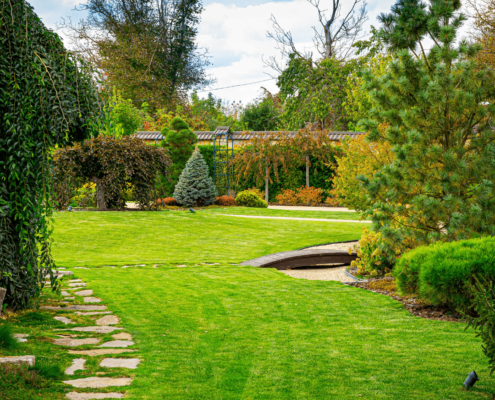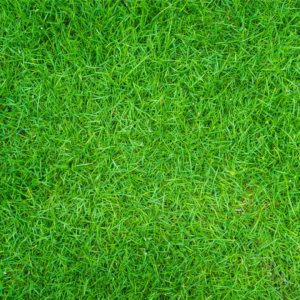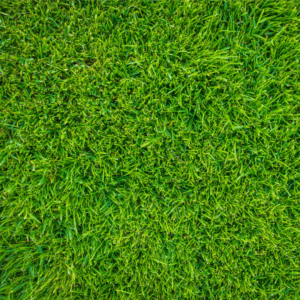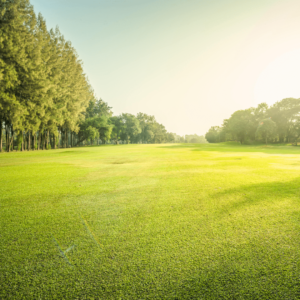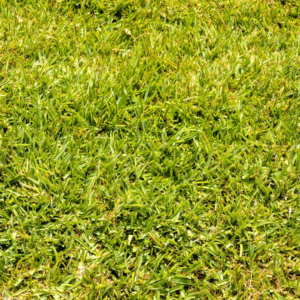5 Low-Maintenance Grasses and Grass Alternatives
If you find yourself caught between wanting a beautiful lawn and not wanting to invest excessive time and effort into maintenance, we have good news for you. It’s possible to achieve a low-maintenance lawn without sacrificing aesthetics.
We’re here to tell you that by choosing the right type of grass, you can save time, money, and frustration.
We’ll walk you through the steps of choosing and nurturing a low-maintenance grass that aligns with your requirements and preferences. Additionally, we’ll cover various types of low-maintenance grass and their suitability for different areas, among other related topics.
What Is Low Maintenance Grass
In our experience, low-maintenance grass refers to grass types that need minimal upkeep.
When we plan for a low-maintenance lawn, we prefer to choose grass varieties that grow naturally well in our region.
The main idea of having a low-maintenance lawn is to pick those grass types that thrive with little input and avoid those that require excessive resources to grow. This not only benefits the environment but also cuts down on expenses and effort in watering, fertilizing, and mowing the lawn.
When talking about a “Low Maintenance Lawn,” it’s important to be realistic about your goals.
You might come across seed bags labeled as “No Mow” grass seed, but the truth is even these seed mixes need occasional mowing, sometimes as often as every 3 weeks. If you want a neater appearance, you’ll have to mow more frequently than that.
On the other hand, if you’re seeking a low-maintenance option that requires minimal effort, you might consider a ‘Bee Lawn’ seed mix. These blends typically combine grass and wildflowers, offering benefits such as erosion control, pollinator support, and the beauty of a landscape that requires less maintenance. However, it’s important to acknowledge that this type of mix may not be suitable for all situations.
For instance, your homeowner’s association might have strict rules prohibiting the installation of a bee lawn. We recommend double-checking with them first.
If you’re interested in a lawn that requires less maintenance but still looks great, or even a bee lawn that requires minimal upkeep, it’s important to take your region into consideration. Refer to the map below to determine which region you fall into (Cool Season, Transition, or Warm Season). Based on your region, we’ll explore different seed types and their suitability for each region.
The 5 Low Maintenance Grass Types
In the regions displayed on the map above, the Cool Season Grass regions offer the best choices for low-maintenance grasses that still looks attractive. This is because fine fescues thrive in these areas.
Fine fescues, including Slender Creeping Red Fescue, Strong Creeping Red Fescue, Chewings Fescue, Hard Fescue, and Sheep Fescue, are the key to achieving a low-maintenance lawn.
These five fescue varieties are highly suitable for low-maintenance lawns due to their various advantages.
Here are the key advantages of Fine Fescue Grasses:
- Slow growth, resulting in less frequent mowing.
- Deep root systems enable them to withstand drought and require less water overall.
- Thrive in both shade and sun.
- Need less nitrogen, reducing the amount of fertilizer required.
- Generally more resistant to disease.
In selecting the right fescue grass for your lawn, it’s important to consider the characteristics of different types.
Typically, a mix of several fine fescue varieties is recommended. This approach allows for natural selection to determine the dominant varieties in your lawn, rather than relying on a single seed type.
Most fine fescue mixes contain three to five different types. Fine fescue is well-suited for the northern states (blue area on the map) and can also be used in the upper portions of the transition zone (highlighted in green).
1. Fine Fescue – The BEST Low Maintenance Grass
We recommend the following Fine Fescue Grass Seeds:
- American Meadows No Mow Mix: This blend combines different fine fescue varieties. For a manicured look, mow every 4-6 weeks at 3″ to 4″. However, you can choose to mow less if you prefer taller growth.
- JRK 4 Fescue No Mow Mix: This mix contains a combination of four fine fescues, along with 10% perennial rye for quick germination and soil erosion prevention. It is highly drought tolerant and suitable for sandy soils.
- High Country Gardens No Mow Mix: Another excellent blend of fine fescues that can be mowed once a month or less. It is a great choice for lawns with high traffic, particularly from kids and pets.
If you prefer to shop locally in Colorado, give us a call at (303) 530-1222 and we will place and prepare your order for local pickup.
2. Turf Type Tall Fescue (For Transition Zone)
As someone looking for a low-maintenance grass type, consider the following options:
While fine fescues thrive in northern regions, they may not be as successful in hotter southern climates. In these cases, Turf Type Tall Fescue (TTTF) is recommended because it offers similar low-maintenance benefits with some minor differences, such as the width of the grass blade.
Moreover, TTTF has certain characteristics that make it ideal for low maintenance.
Here are the key advantages of Turf Type Tall Fescue (TTTF) Grasses:
- Thrives in full sun and drought conditions due to its deep roots.
- Requires less water compared to other cool season grass types.
- Requires less fertilizer compared to other cool season grass types.
- Can tolerate heavy traffic, making it ideal for households with children or pets.
Remember to use the map above to check your growing region.
Turf Type Tall Fescue is best suited for the northern to central parts of the transition zone. In the southern areas, warm-season grass types are more suitable. While TTTF is a low-maintenance grass choice, it requires more care compared to fine fescues in the northern regions.
To maintain TTTF, it should be mowed regularly at a height of 3″-4″ approximately every 7 days (adjusting for seasonal variations). Keeping the grass at 4″ will reduce the need for frequent mowing and naturally suppress weed growth by outcompeting them.
We recommend the following TTTF Seeds:
1. BBB Seed Emerald Tall Fescue Blend: A blend of Turf-type Tall Fescues with a fine texture, rich dark green color, and a dense, uniform turf with bluegrass-like qualities. Emerald III Tall Fescue Blend is tough and durable and bounces back from traffic and heavy use. An excellent choice for playgrounds, parks, athletic fields, golf course roughs, business parks, and home lawns. It will perform well in the shade and has a wide range of adaptability and pH tolerances.
- Jonathan Green Black Beauty Original: This blend of TTTF is highly drought tolerant and can withstand both sun and shade conditions. The deep roots of this blend can grow up to 4 feet deep, ensuring better water absorption and resilience.
- GCI Turf Type Tall Fescue: This blend consists of three superior fescue varieties that offer not only drought tolerance and disease resistance but also a more attractive deep green color compared to other fescues. It can thrive in full sun areas and also tolerate some shade.
All options provide excellent choices for homeowners seeking resilient, low-maintenance grass types.
When it comes to low-maintenance grass types, one that stands out is Buffalograss in our opinion. Although it is a warm-season grass, it is widely grown in both cooler and warmer regions of the Great Plains, West, and Southwest of the United States.
Buffalograss is a sod-forming grass that spreads via above-ground stolons and is characterized by thin, soft blue-gray leaves. It’s a popular low-maintenance grass type in the Great Plains, West, and Southwest regions of the United States.
Here are the key advantages of Buffalograss:
- Tolerates large temperature swings.
- Thrives in low humidity and dry conditions.
- Can endure high winds.
- Requires minimal fertilizing (1-2 applications of nitrogen per year).
- Highly drought tolerant.
- Requires less frequent mowing (mow every 2 to 4 weeks).
3. Buffalograss (Great Plains Region, West, Southwest)
We recommend the following Buffalograss Seeds:
- Gurneys Buffalograss Seed: Native grass for dry prairie regions. Forms a thick and rugged blue/green mat. Grows to a height of 6 inches and requires minimal mowing
- Establish Buffalograss with Sod and Plugs: For effective establishment, shop locally for sod or plugs. Sod and plugs are great methods to establish Buffalograss in your lawn.
4. Centipede (South East to Gulf of Texas)
Centipede Grass is a low-maintenance warm-season grass that spreads through stolons. It thrives in the Southeast region of the United States, extending west to the Gulf Coast of Texas.
Compared to other grasses in the region, Centipede Grass offers several characteristics that reduce maintenance needs.
Here are the key advantages of Centipede Grass:
- Slow growth leads to less frequent mowing.
- Drought tolerant and requires reduced water.
- Minimal fertilizer is needed, only 1-2 pounds of nitrogen per 1000 square feet per year.
- Can thrive in shaded areas.
We recommend the following Centipede Grass Seeds:
- Pennington Centipede Grass Seed & Mulch: A slow-growing variety of Centipede grass with a lush green color and medium texture. It is recommended to mow it at a height of 1″-2″. While it thrives in sunny conditions, it can also tolerate partial shade.
- Establish Centipede Grass with Sod and Plugs: For quicker and easier establishment, consider installing sod or plugs.
5. Zoysia (Transition Zone and South Regions)
Zoysia is a low-maintenance, warm-season grass that is well-suited for the transition zone and southern regions (refer to the map above for specific zones). It thrives in sunny areas but can also handle some light shade.
Zoysia spreads through stolons and rhizomes.
Here are the key advantages of Zoysia Grasses:
- Zoysia is drought-tolerant and requires less watering.
- It is heat tolerant.
- Zoysia withstands high levels of foot traffic.
We recommend the following Centipede Grass Seeds and Plugs:
- Pennington Zenith Zoysia Seed: Keeps your lawn green for longer in cool fall weather and greens up earlier each spring compared to ordinary Zoysia. Performs well in the sun and can tolerate some shade.
- Zenith Zoysia Plugs: A reliable source for Zoysia plugs available for online purchase. Provides information on Zenith Zoysia and maintenance tips.
- Empire Zoysia Plugs: Highly drought tolerant with a beautiful blue-green color. Suitable for growth in various regions, including the south, transition zone, and some southern parts of the cool season grass zone.
- Emerald Zoysia Plugs: One of the slowest growing Zoysia grass types, resulting in less mowing. Usually grown with sod or plugs, but can also be started from seed. Check local options at nearby garden centers or sod farms.
Top 4 Factors to Consider When Choosing Low-Maintenance Grass Seed
We understand that having a lush, green lawn is the dream for many homeowners. However, maintaining a high-maintenance grass variety can be time-consuming and costly.
Luckily, there are low-maintenance grass options available that can provide a beautiful lawn with minimal effort.
Next, let’s look at the top four factors to consider when choosing low-maintenance grass, ensuring that you select the right type for your climate, region, soil type, and water requirements.
Climate and Region Suitability
The first factor to consider when selecting low-maintenance grass is the suitability of the climate and region.
Grasses have different temperature and climate requirements, and choosing the right one for your area is essential.
Research which grasses are recommended for your region’s climate, as certain varieties thrive in specific conditions.
For example, warm-season grasses like Bermuda grass and zoysia grass are well-suited to hot and humid regions, while cool-season grasses like tall fescue and Kentucky bluegrass are better suited to cooler climates.
Most Popular Low Maintenance Grass by Region
To simplify your decision-making process, it’s helpful to know which low-maintenance grasses are commonly used in your region.
Local landscaping professionals or agricultural extension offices can provide valuable insights into popular choices for your area.
By selecting grass species that are widely used in your region, you can benefit from expert advice, local availability of seeds or sod, and the experiences of your neighbors who may have grown the same grass variety.
Soil Type and pH Considerations
Grasses have specific soil and pH requirements to grow and thrive. Understanding your soil type and pH levels is crucial when choosing low-maintenance grass.
Sandy soils, for example, drain water quickly, whereas clay soils retain more moisture. Some grasses, such as buffalograss or centipede grass, are well-suited for sandy soils, while others like fine fescue or perennial ryegrass can tolerate a variety of soil types.
It’s also essential to consider the pH level of your soil; some grasses prefer acidic soils, while others thrive in alkaline conditions. Conducting a soil test will provide you with the information needed to select the appropriate grass variety.
Water Requirements and Drought Resistance
Water availability and conservation are important factors to consider when choosing low-maintenance grass. Some grasses require more water to thrive, while others are more drought-tolerant.
If you live in an area with limited water resources or want to minimize water usage, selecting a drought-resistant grass variety is critical. Warm-season grasses like buffalograss and Bermuda grass are known for their drought resistance, while cool-season grasses like tall fescue and fine fescue can tolerate drier conditions compared to other grass varieties.
Exploring Other Low-Maintenance Grass Alternatives
If you’re looking for low-maintenance options that still offer a stunning landscape, there are several alternatives worth exploring.
We’ll introduce you to some of these low-maintenance lawn alternatives, highlighting their unique features and benefits. With these alternatives, you can have a gorgeous outdoor space without the high maintenance demands of a traditional lawn.
Ground Covers
Ground covers are an excellent low-maintenance option that provides a lush and attractive ground surface. These plants spread across the ground, creating a beautiful carpet-like appearance.
One popular choice is creeping thyme, which releases a pleasant fragrance when stepped on. Other options include sedum, which offers a variety of colors and textures, and clover, known for its nitrogen-fixing properties that benefit the soil.
Ground covers require less watering, mowing, and fertilizing compared to traditional lawns, making them an environmentally friendly choice.
Ornamental Grasses
If you prefer a natural look in your outdoor space, ornamental grasses can be an ideal alternative to traditional lawns. These grasses come in various heights, colors, and textures, adding dimension and interest to your landscape. They require minimal maintenance, as they only need annual pruning and occasional watering.
Ornamental grasses are also drought-tolerant and can withstand harsh weather conditions, making them a resilient option for low-maintenance landscapes.
Wildflower Meadows
Create a vibrant and pollinator-friendly landscape by replacing your traditional lawn with a wildflower meadow. Planting a mix of native wildflowers can offer a burst of colors and attract beneficial insects like butterflies and bees.
Wildflowers thrive in diverse soil conditions and require minimal maintenance once established.
Simply mow or trim the meadow once a year to encourage new growth. Not only will a wildflower meadow save you time and effort, but it will also contribute to the conservation of native plants and support local wildlife populations.
Moss Gardens
If you’re seeking a low-maintenance lawn alternative that adds a touch of tranquility and uniqueness, consider a moss garden. Moss thrives in shady areas where traditional grass struggles to grow.
Moss requires little to no mowing, fertilizing, or watering once it’s established. It creates a lush and velvety ground cover that is visually appealing and can provide a soft underfoot experience.
Moss gardens are an eco-friendly choice, as mosses naturally purify the air and help retain moisture in the soil.
Conclusion
As we mentioned, maintaining a traditional lawn can be a time-consuming and labor-intensive task. If you are a true lover of taking care of your landscape you’ll know what we’re talking about, but always consider these low-maintenance lawn alternatives that can provide beauty and functionality to your outdoor space while minimizing your effort and time investment.
By the way, ground covers, ornamental grasses, wildflower meadows, and moss gardens are just a few options that offer lush, eco-friendly, and visually appealing alternatives to traditional lawns.
If you would like to explore other alternatives, to create a stunning landscape that requires less maintenance, allowing you to spend more time enjoying your outdoor oasis, let us know in the comments or contact us directly and we would be more than happy to prepare something for you.
Low Maintenance Grass FAQs
Q: What is the lowest maintenance grass?
A: Fine fescue stands out as a highly popular and low-maintenance cool-season grass option. Both hard fescue and fine fescue mixes demand minimal upkeep. With this choice, you’ll only need to mow your lawn once or twice annually.
Fescues possess hardiness and possess a natural ability to outcompete weeds, eliminating the need for fertilizers, herbicides, or pesticides.
Q: What is the easiest grass to manage?
A: We recommend Zoysia grass as the ideal choice for those seeking a low-maintenance lawn. The Turfgrass Group, in collaboration with universities and experts, has developed excellent varieties of Zoysia grass.
Q: What is the cheapest alternative to grass lawn?
A: For an uncomplicated, cost-effective, and hassle-free alternative to a conventional lawn, consider combining mulch and ornamental grasses. Ornamental grasses require minimal upkeep and can withstand drought conditions. Additionally, mulch enhances soil quality and prevents weed growth.
Q: What grass doesn’t need to be watered often?
A: In cool-season climates, the top choices for drought-tolerant grasses are Tall Fescue, Fine Fescue, and Kentucky Bluegrass. Tall Fescue, characterized by narrow, dark green leaves, stands out as one of the most resilient cool-season grasses, requiring only one to 1.25 inches of water per week.
Q: How can I grow grass fast and cheap?
A: When it comes to establishing a lawn quickly, there are two options: sod and seed. While sod provides instant satisfaction, many homeowners choose to sow their lawn from seed due to its cost-effectiveness. Typically, you can start seeing results in just a couple of weeks.
Q: What is the most versatile grass?
A: We find that Perennial Ryegrasses are a great option for quick establishment from seed, as they help to prevent topsoil erosion. Additionally, their vibrant green color remains intact even after mowing. When it comes to cool-season grasses, the fine fescues are exceptionally versatile.
Q: What grass stays green most of the year?
A: Fescue is the grass that stays green most of the year. Unlike warm season varieties, we appreciate that fescue maintains its vibrant green color throughout the year.

